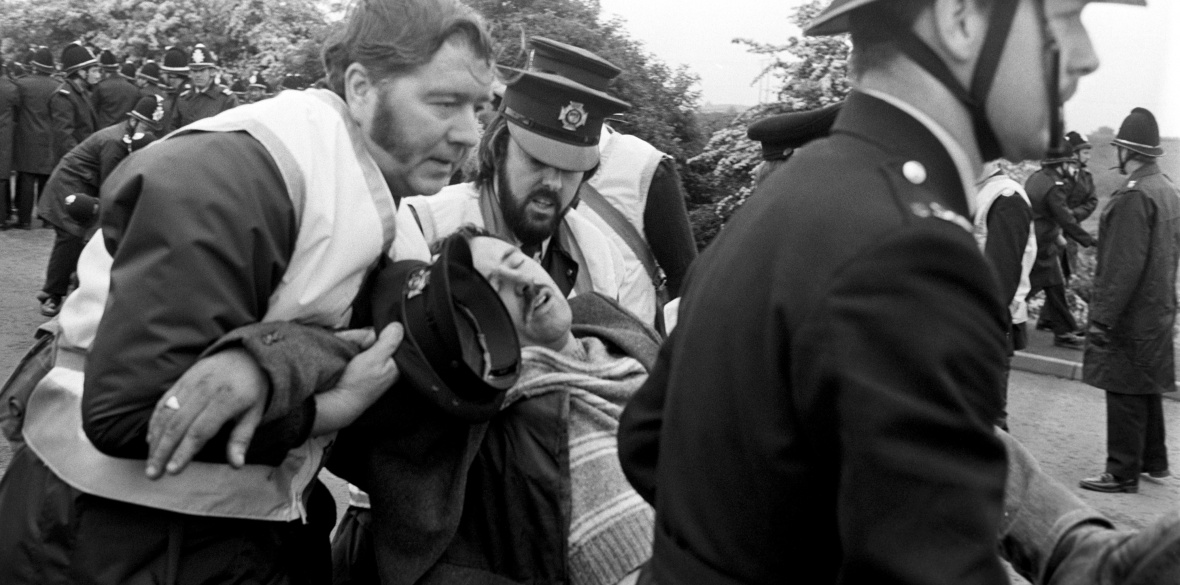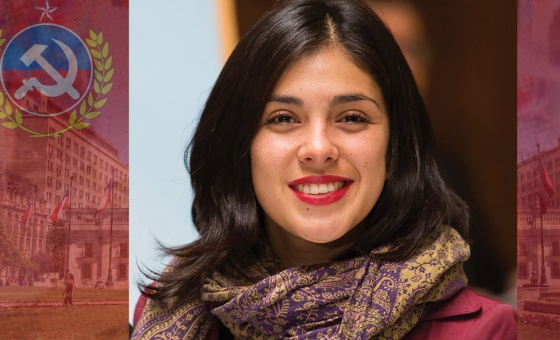This is the last article you can read this month
You can read more article this month
You can read more articles this month
Sorry your limit is up for this month
Reset on:
Please help support the Morning Star by subscribing here
THE second anniversary of Amber Rudd’s appalling decision to reject a public inquiry into policing at Orgreave on June 18 1984 is a few days away.
We now know that in the 16 months between Theresa May, as home secretary, inviting a submission in June 2015 from the Orgreave Truth and Justice Campaign (OTJC) for a public inquiry, and Rudd rejecting it on October 31 2016, the Home Office did not consider the police files or trial transcripts — the actual facts of what happened.
Instead, under May, then Rudd, they looked only at the original Thatcher government files from 1984 and 1985.
It was after considering them, and what they revealed about that Conservative government’s actions, that they decided against an inquiry. They wanted to bury inconvenient truths.
Rudd’s tawdry reasons for rejecting an inquiry were that any review would be hampered by the passage of time, that some of those involved had died and that, in terms of accountability, most officers whose conduct might be examined were no longer employed by the police.
She also made the “difficult decision” because “ultimately there were no deaths or wrongful convictions” resulting from the conduct of South Yorkshire Police at the time.
But if Rudd or — after her ignominious departure over her handling of the Windrush scandal — her successor, Sajid Javid, think the matter is closed they are so wrong.
Indeed, the decision to block an inquiry galvanised the OTJC and it has sustained an incredible level of activity and a high public profile since then. As we move towards 2019 that energy and activity will be sustained.
Next year will be the 35th anniversary of Orgreave, the setting for the most violent assault by police during an industrial dispute.
But it is also the 200th anniversary of another infamous deployment of the forces of the state to squash popular protest, the Peterloo Massacre.
There are many parallels between the two events. The huge crowd, estimated at 60,000 people, which assembled in St Peter’s Fields, Manchester, on August 16 1819 was peaceful and good humoured, and the weather was bright and sunny.
But the authorities were fearful of such a display of political protest. The French Revolution was well within living memory. And after the end of the Napoleonic wars in 1815 there had been a series of uprisings and localised violence, mainly about food and living conditions in the years of shortages and unemployment that followed. Luddites had also broken machinery in mills across the country.
Home secretary Lord Sidmouth used undercover spies to gain intelligence about subversive activities and, fearful of insurrection, guaranteed that the civic authorities could rely on Parliament to indemnify them if violence did break out.
In Manchester those opposed to reform had created the Manchester Yeomanry in 1817 and more than 1,500 soldiers, including 340 regular cavalry from the 15th Hussars, were deployed that fateful day.
Troops sent in to disperse the St Peter’s Fields crowd acted so aggressively that 18 people were killed and more than 650 injured in the bloodiest political clash in British history.
In the face of these facts, the authorities tried to claim that the troops had been attacked first with stones and cudgels.
The government and its press trumpeted their conviction that the threat of revolution had been averted and moved to repress the unstamped, radical press, rushing through the Six Acts in December 1819 which extended the government’s powers to control meetings, and prosecute newspapers for seditious libel.
The term “Peterloo Massacre” was coined by a local journalist, James Wroe, in punning reference to the battle of Waterloo four years earlier.
Wroe paid for this when his radical newspaper, the Manchester Observer, closed down and he was sentenced to a year’s imprisonment for seditious libel.
Fast forward to June 18 1984 as miners dressed in summer attire assembled at Orgreave.
Thatcher’s biographer Charles Moore records how she summoned Willie Whitelaw immediately on taking office in 1979 and announced: “The last Conservative government was destroyed by the miners’ strike. We’ll have another and we’ll win.”
Thatcher sought to avenge the miners’ victories of 1972 and 1974 and prepared meticulously for what she saw as a crucial test of her power.
In the 1980s the police were politicised, trained in aggressive riot control techniques and transformed into blunt instruments to confront workers in industrial disputes.
It was in this context that the police were encouraged to dehumanise striking miners, and the brutal assault on the miners assembled at Orgreave by paramilitary police units was the consequence.
Mike Leigh’s new film Peterloo and events commemorating the event in 2019 will provide people with a powerful understanding of the way the state can use force to suppress dissent and protest.
We hope it will lead people to support the work of the OTJC to get truth and justice for those miners bruised, battered, arrested and falsely accused at Orgreave.
Granville Williams is co-ordinator of the Campaign for Press & Broadcasting Freedom (North) and an active member of the OTJC. His books include Settling Scores: The Media, the Police and the Miners’ Strike. You can find out more about the OTJC at www.otjc.org.uk.












